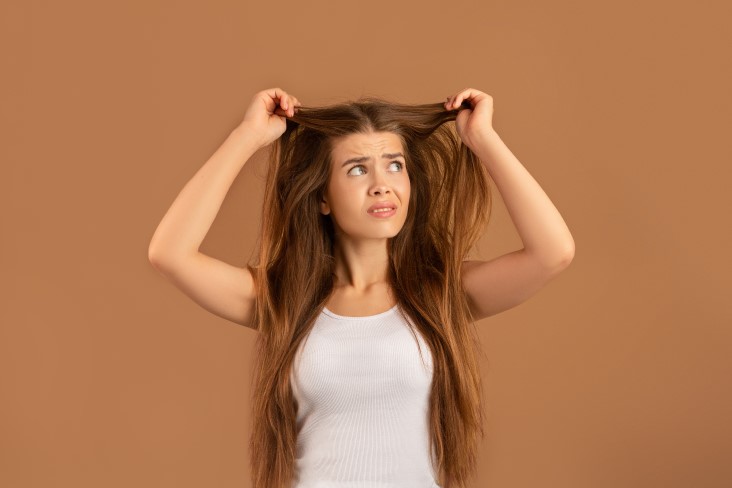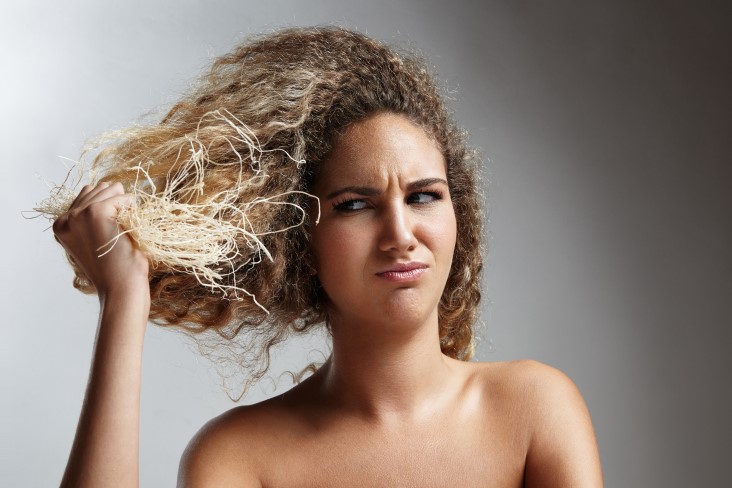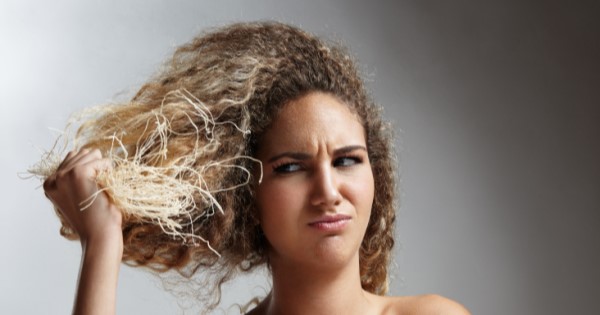
Damaged hair can be a frustrating problem to deal with. It’s a problem that any hair type can deal with—curly hair and straight hair alike. Whether your problem is primarily with dry hair, hair breakage, hair loss, or frizzy hair, there’s likely a specific issue that has led to the hair issues you’re experiencing. Here are a few things that can cause various types of damaged hair, as well as a few treatment methods that might help.
1. Environmental and Lifestyle Factors
This is one of the most prominent reasons to experience hair issues, especially because it can cause different problems in different areas. If you live in a cold place or a place with low humidity, you’re at a higher risk of dry or dehydrated hair, which can lead to broken hair, a rough texture, and a generally dull appearance. It’s also important to hydrate, as that internal hydration will lead to stronger hair growth.
Of course, you can’t move just to create more healthy hair, so some amount of hair damage is inevitable. However, you can utilize hair treatments that add moisture back to the hair shaft, and you might create a hair care routine that focuses more on hydration. Regular trims are also important to avoid the appearance of split ends. For some, especially those with coily hair and other sensitive hair fibers, a satin pillowcase can avoid hair damage while sleeping.
2. Coloring and Other Treatments
Most people know that hair color causes some amount of damage to the hair. Of course, different types of coloring can impact the hair differently. Bleached hair is more likely to sustain damage than color-treated hair that started out as blonde. However, if you’re changing your hair color or hair texture with chemical treatments, you can assume that you’re going to sustain some amount of chemical damage to your hair.
This is one of the reasons it’s so important to have a strong hair care routine if you’re changing your hair color. You need to pay extra attention to colored hair and avoid anything that could cause more damage, such as tight ponytail styles and rapid changes with hair coloring services. It’s also important to go to hair experts to change your hair color, as they’ll be able to change your hair with the least amount of damage.
3. Excessive Heat
Heat is one of the ways you can change your hair structure, but it’s also not great for your hair. Whether you’re using curling irons, a flat iron, a hair dryer, or even hot water while showering, hot tools can negatively impact your hair health. Daily heat styling is not great for your hair, which is why many people recommend against using hair irons regularly.
If you’re not quite ready to give up your hair irons, there are also heat-protectant sprays that you can use to reduce hair damage. However, regardless of what you do to mitigate the damage, you should try to move away from daily heat styling. Hot tools can also do more damage to already-damaged hair, such as color-treated hair, so try to avoid heat when styling hair that’s already treated.
4. Low-quality Products
Whether it’s shampoo, a hair mask, a leave-in treatment, or styling products, low-quality products can do more harm than good to hair. Many of these treatments are applied to damp hair or wet hair when the hair is able to receive more products. While this allows your hair to absorb amino acids and vitamins from a protein treatment or keratin treatment, it also means the hair can absorb negative chemicals and fillers from a low-quality product.
If you’re going to apply products to your hair, it’s important that they’re using strong active ingredients and not filling their formula with low-quality fillers. This can cause physical damage to your hair, which can undo any benefits you’re hoping to achieve for your hair type. Talk to hair experts to get information about which products are best for your hair.
Investing in Quality Hair Treatments
If you have damaged hair, you may want to invest in specialty treatments to fix the problems you’re experiencing. Here are common hair treatments to consider.
Clarifying Treatment
A clarifying treatment is a type of treatment that does a deep cleanse on your hair. It strips your hair of product build-up, which can come from using dry shampoos, utilizing a lot of treatments, and hard water build-up. This can be an important treatment if you have oily hair, but you shouldn’t use it too frequently. Regularly using clarifying treatments can actually worsen oily hair, as your scalp might start producing more oil to try and moisturize itself.
Reconditioning Treatment
Reconditioning treatments, also called deep conditioning treatments, are all about bringing moisture back into dehydrated hair. These may be important if you have colored hair, for example, which might have sustained a significant amount of physical damage that has led to a frizzy or dry texture. This can help you breathe some life back into frizzy or extra-dry hair.
Intensive Treatment
Intensive treatment is a very broad term, and it generally refers to any treatment that utilizes more product or goes for longer than you might use for generally healthy hair that is just experiencing a small road bump. If you’ve gone through chemical treatments, such as hair coloring services, intensive treatment may be a good idea to restore some moisture. Some people with curly hair who haven’t been caring for their hair may also start their journey toward better hair health with an intensive treatment.
Keeping Your Hair and Scalp Healthy

Healthy hair and scalp are important parts of health overall, but you may not have all the necessary knowledge to do it on your own. If you’re looking to create healthier hair, it might be a good idea to book an appointment with an Ogle School salon. This way, you can get help from hair experts who know exactly what problems you’re facing and how to fix them.



